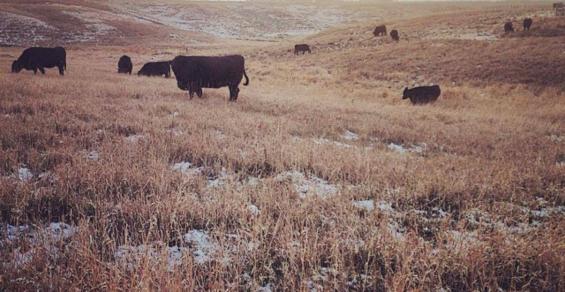In the last seven years, my husband Tyler and I have gotten married, purchased a home and pasture adjacent to my parents’ ranch, revitalized old buildings and built new corrals and fences, expanded our cow herd and rented land to accommodate our growing numbers.
Looking to the next decade, we have now maxed out our available forages. In order to grow our herd and our business, we’ll need to find more land to rent or buy.
According to a 2017 farm real estate survey conducted by South Dakota State University, a look at the state’s agricultural land market trends from 1991 to 2017, shows a downward trend of land values with crop values declining 4.7% and rangeland values dropping 0.6%. This slight change could present opportunities for investors; however, there are a few things to consider before pulling the trigger on a piece of ground.
In addition to the financial component, there are some unique characteristics of rangeland that must be evaluated. The Noble Research Institute discussed this topic in a recent article written by livestock consultant Robert Wells, Ph.D., and planned consultant manager Rob Cook.
Here are five variables of pasture land to consider before making a purchase:
1. Soil types
Wells and Cook write, “Soil types can vary widely, not only across counties but also across ranches. Each soil type has different forage production potential. A loamy, bottomland soil will have the potential to produce more grass than a shallow soil found along ridges or hilltops. Knowing what and how much of each soil types are on the ranch will allow you to understand the forage production capability of the land you’re investigating. Land that has the capability of producing less forage for cattle consumption than other properties in the same general area could be less valuable to a livestock producer because of the reduced animal number it will support relative to properties of comparable size.”
2. Non-grazeable land
According to the article, “Not all of the acres on the property will be grazeable. Roads, energy production sites, steep or rocky terrain, and high densities of brush cover will restrict grazing animal accessibility and/or reduce or eliminate forage production. These areas will have to be accounted for when determining the property value for cattle production because the production realized on other acres or income from other enterprises will need to be utilized to pay for non-grazeable acres.”
3. Past land management
“The land health must also be considered,” they say. “Past management can have a large impact on land health, and large amounts of time and/or money may be needed to overcome misuse by previous managers. A quick soil test on introduced pastures will give you an idea of the soil fertility and what type of nutrient inputs will be needed to meet the management goals you have for the property. Native grass communities could be shifted to less desirable grasses or low production because of past overgrazing. These issues can be corrected with proper management but will need to be thought through when developing a grazing management plan or an analysis of the economic feasibility of purchasing and operating a property.”
4. Water location and quality
Wells and Cook add, “Water location and quality is essential when evaluating land for cattle production. As a general rule of thumb, cattle prefer not to range more than one-half to three-quarters of a mile from a water source. Therefore, make sure water sources are no farther than 1 mile apart in each pasture. The closer the better, as areas closest to the sources will be more heavily grazed; those furthest away will have little to no grazing activity. Larger and deeper impoundments will typically have better water quality. The larger the water source, the less susceptible it is to drying up in a drought. Well water is usually better quality and a more dependable source, especially during droughts. However, it is prudent to test all water sources to ensure there are no pollutants that could cause an animal to reduce intake or harm. Well water can be high in sulfur and salts that can be detrimental to cattle performance.”
5. Infrastructure
“What infrastructure will come with the ranch?” they ask. “Is there is an overhead feed bin on-site that could be negotiated in staying after the sale? Overhead feed bins cost $8,000 to $10,000 to purchase, deliver and set up on a ranch. They allow for flexibility in feed types as well as when and from where feed can be procured. Are there quality and large-enough working pens that are strategically placed on the property? Look to see how well the working pens are constructed. Make sure the layout is logical and that cattle will flow calmly and smoothly through the working area. Make sure there is a good, full squeeze chute in the pens, not just a head gate at the end of an alley. Building new working facilities on a ranch is an expensive undertaking, especially if old pens have to be torn out before a new set is built.”
To read additional tips from Wells and Cook, such as easements and fence conditions, click here.
Land can be a good investment, if the terms, conditions and terrain is just right. When opportunities knock, be an educated buyer and consider all of these factors before signing on the dotted line.
The opinions of Amanda Radke are not necessarily those of beefmagazine.com or Farm Progress.




Leave A Comment